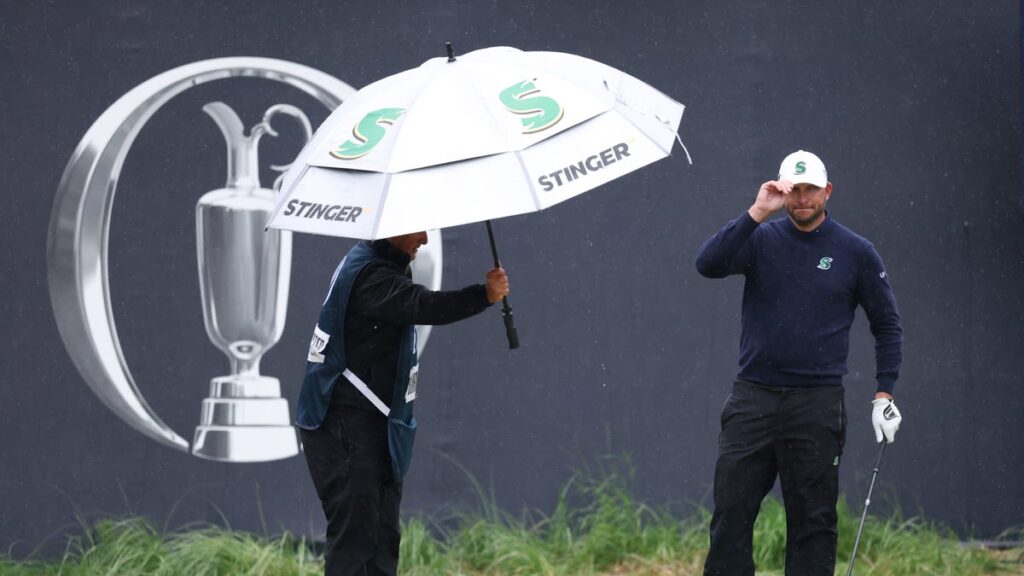At rainy Royal Portrush, caddies shield golf balls, not players. Learn why, and how water changes shots and spin in wet conditions.
With rain falling steadily on Royal Portrush during the opening round of the 153rd Open Championship, players aren’t just contending with a demanding links course — they’re also battling the elements. Staying dry is part of the job, but you might notice something peculiar on the tees and greens: caddies aren’t shielding their players with umbrellas. They’re holding them over the golf ball instead.
There’s a practical reason for that, and it has less to do with comfort and more to do with performance.
Today’s rain gear does a remarkable job of protecting players from getting soaked. Modern waterproof jackets and pants are breathable, flexible, and far less restrictive than the rain suits players wore a generation ago. Rain gloves actually get grippier when they’re wet, and waterproof shoes keep feet dry even in a downpour. So while no one loves playing in the rain, players can manage to stay relatively dry and comfortable.
The golf ball, though, is a different story. When a ball is wet, especially on the tee or green where players have control to keep it dry, it can behave very differently from a dry one.
That’s because when a golf ball is wet, even a driver — which doesn’t have grooves — can produce unpredictable results. On a dry day, the ball compresses against the face at impact, but when moisture is involved, the ball tends to skid or slide up the clubface. That reduces spin and makes the ball flight less controllable.
With irons, the problem can be even more pronounced. Grooves are designed to grab the ball’s cover and generate spin, but a slick, wet ball limits that interaction. Instead of digging into the ball, the grooves struggle to create friction, leading to shots that launch higher with less spin, which can rob players of both distance control and stopping power on the green.
That’s why on the tee box, when a golfer can place a dry ball on a tee, caddies are laser-focused on keeping it as dry as possible.
You’ll also see players grabbing a towel to dry the face of the club before they hit. That’s not just a ritual — it’s an effort to ensure the cleanest, driest contact possible to maintain predictable ball flight.
Once a player is in the fairway or rough, though, umbrellas over the ball aren’t an option — the ball’s already wet. That’s where club design helps. Wedges, for example, are built with deeper, wider grooves than irons to channel away moisture and debris. Some companies machine microgrooves or apply surface treatments to further improve friction between ball and face, especially in wet conditions. Still, the main grooves do the heavy lifting.
Even if players can generate decent spin on chip and pitch shots, wet grass and soft greens can throw another curveball. Low, spinning shots can hydroplane and slide, while higher shots with spin might grab and peel back more sharply on rain-softened putting surfaces.
On days like this at Portrush, being able to judge how water on the ball, clubface, and green will affect every shot is as much a skill as reading a double-breaking putt.
Read the full article here



